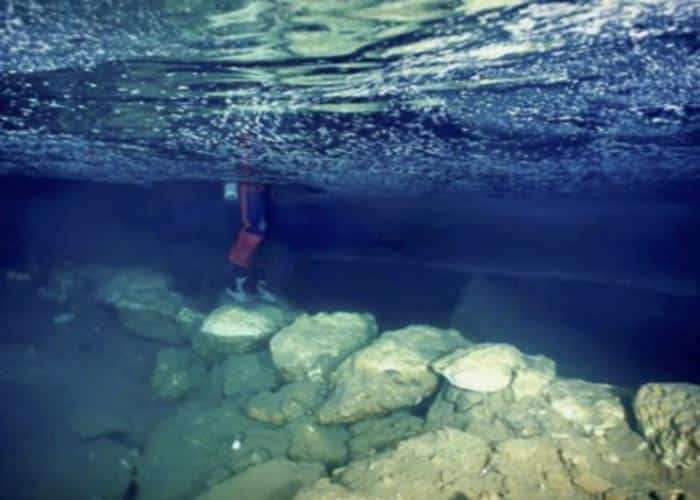Led by a USF geologist, an international research team has unearthed a submerged 25-foot bridge in Mallorca’s Genovesa Cave, revealing earlier-than-expected human colonization in the western Mediterranean.
A groundbreaking study led by geologists at the University of South Florida (USF) has revealed that humans settled the western Mediterranean much earlier than previously thought. The discovery of a submerged 25-foot bridge in Mallorca’s Genovesa Cave has provided new insights into the timeline of human colonization in this region, challenging long-standing assumptions and offering a fresh perspective on early human activities.
The findings, published in the journal Communications Earth & Environment, suggest that the western Mediterranean islands were colonized sooner than the traditionally accepted timeline. This revelation narrows the chronological gap between the settlement periods of the eastern and western Mediterranean islands.
The Discovery
The research, spearheaded by Bogdan Onac, a professor of geosciences at USF, focused on a submerged stone bridge discovered in the Genovesa Cave, located on the Spanish island of Mallorca.

View of the submerged stone bridge from Genovesa
Cave, Mallorca, Spain.
Credit: R. Landreth
Rising sea levels have flooded the cave’s passages over millennia, facilitating the formation of distinct calcite encrustations that serve as records of historical sea levels. These formations, along with a marked light-colored band on the bridge, allowed researchers to track sea-level changes and date the bridge’s origins.
“The presence of this submerged bridge and other artifacts indicates a sophisticated level of activity, implying that early settlers recognized the cave’s water resources and strategically built infrastructure to navigate it,” Onac said in a news release.
Challenging Existing Assumptions
Mallorca, the sixth-largest island in the Mediterranean, was among the last to be colonized. While previous studies suggested a human presence dating back 9,000 years, the findings were often questioned due to inconsistencies and poor preservation of artifacts.
Recent evidence, using materials like charcoal and bones, placed human settlement around 4,400 years ago, aligning with significant environmental shifts, such as the extinction of the goat-antelope genus Myotragus balearicus.
However, by analyzing mineral overgrowths and coloration bands on the submerged bridge, Onac’s team concluded that its construction dates back approximately 6,000 years. This makes the bridge significantly older than previously estimated, thus reshaping the history of human settlement in the western Mediterranean.
Interdisciplinary Collaboration
“This research underscores the importance of interdisciplinary collaboration in uncovering historical truths and advancing our understanding of human history,” Onac added.
The study involved partnerships with Harvard University, the University of New Mexico and the University of the Balearic Islands.
Fieldwork included meticulous underwater exploration and advanced dating techniques, enabling precise historical reconstructions. Onac plans to continue exploring other cave systems, some of which contain deposits dating back millions of years, to further investigate preindustrial sea levels and the effects of modern climate change.
Looking Ahead
This remarkable discovery not only highlights the advanced capabilities of early human settlers in the region but also enhances our comprehension of their interaction with changing environments. The study paves the way for future explorations that may uncover even earlier human activities and refine our understanding of prehistoric migrations across the Mediterranean.

